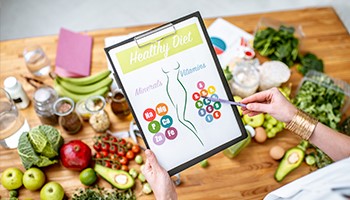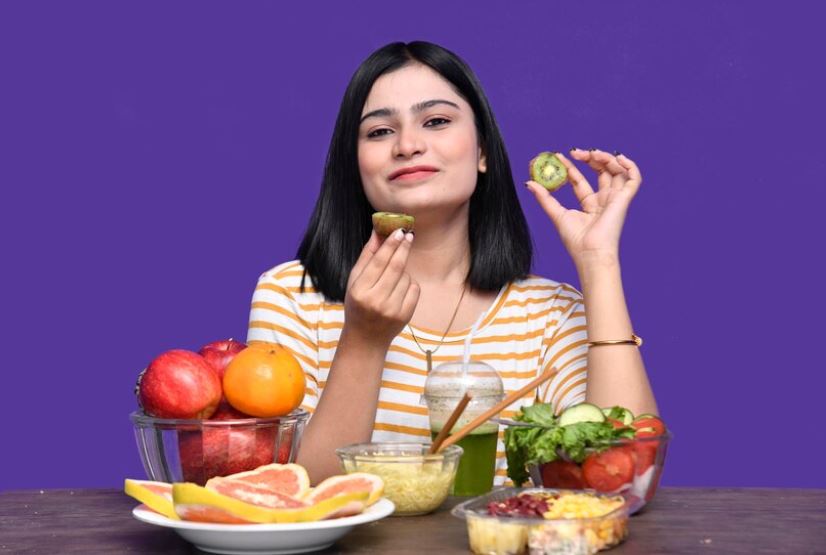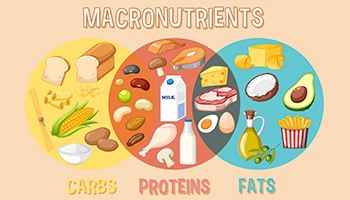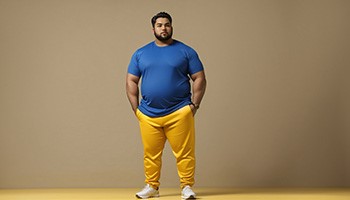Indian Delights: Vegetarian Foods Rich in Iron

Are you looking for ways to add more iron to your vegetarian diet? Iron is an essential nutrient that plays a crucial role in the transportation of oxygen throughout the body. If you’re a vegetarian, it can be challenging to get enough iron through your diet. In this blog post, we will discuss the importance of iron and its recommended daily intake for vegetarians. We’ll also provide a list of top 10 iron-rich vegetarian foods, such as spinach, lentils, and dark chocolate.
Recommended Daily Intake of Iron for Vegetarians
On average, it is recommended that individuals consume 18 mg of iron daily. However, this requirement can differ depending on various factors such as age, gender, health condition, and life stage. For instance, adolescent girls require 35 mg of iron to account for growth and menstrual losses while lactating mothers need to consume 21 mg of iron per day. (1)
Top 10 Iron-Rich Vegetarian Foods
1. Soybean
Foods such as soybeans, tofu, natto, and tempeh is renowned for their high iron content. A single cup of soybeans provides 8.8mg of iron, which is equivalent to 49% of the recommended daily intake. Natto, a fermented soybean product, is particularly rich in iron, offering 15mg per serving.
In the same way, consuming 170 grams of tofu and tempeh provides roughly 20% of the recommended daily intake (RDI) for iron. Soybeans and soy-based products are not only abundant in iron but also contain high levels of protein, as well as being excellent sources of magnesium, calcium, and phosphorus.
The fermented form of soybean is the best way to get the complete nutrition.
2. Lentils
Lentils are one of the most versatile and nutritious vegetarian foods that are rich in iron. They contain high amounts of protein, fiber, and other essential nutrients such as potassium, magnesium, and folate. Lentils come in different varieties like green, brown and red lentils with varying cooking times, making them a convenient ingredient for a variety of dishes.
Lentils, a legume rich in iron, offer about 6.6 mg of iron per cup, equivalent to 37% of the recommended daily intake. Incorporating lentils into your diet is a great way to supplement your protein and complex carbohydrate intake while also boosting fiber consumption.
3. Dark Chocolate
Dark chocolate is not just an indulgence, but also a great source of iron for vegetarians. With up to 2.4 mg of iron in a 100-gram serving, the darker the chocolate, the higher the iron content. Not only does it offer 3.4 mg of iron per 30g, meeting around 19% of the Recommended Dietary Allowance (RDA), but it also contains a good amount of fiber, magnesium, copper and manganese
Besides being rich in iron, dark chocolate is also packed with antioxidants that may help reduce inflammation and lower the risk of heart disease. However, it’s crucial to consume dark chocolate in moderation due to its high-calorie and sugar content. So, if you want to satisfy your sweet tooth and meet your daily iron requirements, a small amount of dark chocolate can go a long way.
4. Spinach
Introducing spinach to your diet can significantly boost your iron intake. One hundred grams of spinach contains 3.5 milligrams of iron, making it one of the best plant-based sources of this essential mineral. Spinach is also rich in other nutrients like vitamin A, vitamin C, and folate. The leafy green vegetable is versatile and can be incorporated into a variety of dishes such as salads, smoothies, omelets, and quiches. However, it is essential to note that spinach contains oxalates, which can interfere with the absorption of calcium and iron in the body. (2)
To neutralize the oxalates, make sure to consume leafy greens after blanching, boiling or steaming them and “discard” the water.
5. Beans and Peas
Apart from soybeans and lentils, there are other types of beans that are high in iron content, such as red kidney beans, white beans, lima beans, and navy beans. These varieties of beans offer approximately 4.4-6.6 mg of iron per cup when cooked. Additionally, chickpeas and black-eyed peas are also good sources of iron, with a cooked cup providing about 4.6-5.2 mg of iron.
Beans and peas, in addition to iron, are excellent sources of potassium, manganese, folate, and numerous other plant compounds that provide benefits to the body. Including beans and peas in your diet can assist in addressing issues associated with blood pressure, cholesterol, and blood sugar levels.
6. Sesame, Pumpkin, Hemp, Flax, and Garden Cress Seeds
Seeds are also great when nutrition for the body. Pumpkin, sesame, hemp, and flax seeds are rich sources of iron.
In two tablespoons of garden cress seeds, there is approximately 1.2-4.2 mg of iron, which makes up for about 7-23% of the recommended daily intake (RDI). These seeds are abundant in iron, vitamin C, and folic acid.
All plant-based foods like grains, seeds, and nuts need to be soaked and/or boiled, and Ched to neutralize the anti-nutrient compounds in them for easy digestion and absorption of minerals. The bigger the grain/seed, the longer the soaking is required.
Tahini, a paste made from sesame seeds, and hummus, a paste made from chickpeas, both contain approximately 2.6 mg of iron.
Seeds are a rich source of plant protein, fiber, calcium, and magnesium. Additionally, they possess excellent antioxidant properties and are abundant in both omega-3 and omega-6 fatty acids. (3)
7. Cashews and Pine Nuts
Cashews and pine nuts are two delicious and nutritious options for vegetarians looking to increase their iron intake. These nuts are not only high in iron, with one ounce of cashews containing 1.6 mg of iron and pine nuts containing 1.3 mg, but they also provide a range of other health benefits. Cashews are high in healthy fats and protein, making them a great snack or addition to meals such as stir-fries and salads. Pine nuts, on the other hand, are often used in pesto sauces or sprinkled on top of pasta dishes for added flavor and texture.

It is important to note that these nuts are best consumed in their raw state. Roasting can potentially harm the nutritional content of the nuts, so it is advisable to consume them in their natural form after soaking. Additionally, nuts are a reliable source of protein, beneficial fats, and essential vitamins.
8. Green Leafy Vegetables
When discussing vegetables that are rich in iron, it is widely accepted that green leafy vegetables are the most beneficial for your body. Spinach, kale, fenugreek, lettuce, and dill are all examples of green leafy vegetables that offer an average of 2.5-6.4 mg of iron per serving, equaling approximately 14-36% of the recommended daily intake (RDI).
In comparison to an equivalent portion of red meat and salmon, 100 grams of spinach contains 1.1 times more nutrients. Besides iron, leafy green vegetables are also abundant in potassium and sodium which are crucial for maintaining a healthy body. Additionally, other green veggies such as broccoli, cabbage, and Brussels sprouts make up 6-10% of the recommended daily intake of essential vitamins and minerals.
When cooking leafy greens with tomatoes or adding lemon to them, the absorption of non-hemi iron in tomatoes is improved. Although raw tomatoes only contain approximately 0.5 mg of iron per cup, consuming concentrated tomatoes can provide a significantly greater amount of iron.
Tomato paste and tomato sauce are known to contain higher levels of iron. Additionally, sun-dried tomatoes are also considered to be a substantial source of iron. Apart from this, tomatoes are rich in vitamin C, which is beneficial in enhancing the absorption of non-hemi iron. Furthermore, they are an excellent source of lycopene.
9. Potatoes
Iron is found in potatoes and is predominantly concentrated in their skins. A single unpeeled potato of considerable size can offer up to 3.2 mg of iron. Preparing potato skins with the appropriate seasoning can enhance their taste and provide a delightful experience for your palate.
In comparison to regular potatoes, sweet potatoes have a slightly lower content. Additionally, potatoes serve as an excellent source of fiber and meet your daily needs for vitamin C, B6, and potassium.
10. Mushrooms
Mushrooms are not only delicious, but they are also an excellent vegetarian food with iron
.Portobello mushrooms, in particular, are high in iron, with one cup containing 5.2mg of iron. Additionally, shiitake and oyster mushrooms also contain significant amounts of iron.
Incorporating mushrooms into your meals is a simple way to boost your iron intake and add more variety to your diet. To maximize absorption, pair these iron-rich foods with sources of vitamin C like bell peppers or citrus fruits, which can enhance the body’s absorption of plant-based iron.
11. Dried apricots
Dried apricots are a decent vegetarian iron source. They contain approximately 2.7 milligrams of iron per 100 grams, which can contribute to your daily iron intake.
12. Fortified cereals
Fortified cereals can be a good source of iron. Many fortified cereals are enriched with iron, providing a convenient way to boost your iron intake, especially for those with dietary restrictions or deficiencies. Check the label for specific iron content.
13. Tofu
Tofu is a plant-based source of iron, and it can be a good source, particularly for vegetarians and vegans. The exact iron content in tofu may vary depending on the brand and type, but generally, it contains about 2-3 milligrams of iron per 100 grams of tofu. This can contribute to your daily iron intake.
14. Olives
Olives are vegetarian sources of iron. They contain only a small amount of iron. On average, green olives contain about 0.49 milligrams of iron per 100 grams, and black olives contain slightly less, around 0.36 milligrams per 100 grams. If you’re looking to increase your iron intake, you’d need to consider other sources.
15. Whole grains
Whole grains can be a good source of iron, but the iron content varies depending on the specific type of grain. Here are approximate iron content levels in some common whole grains per 100 grams:
- Quinoa: About 4.6 milligrams of iron.
- Amaranth: About 7.6 milligrams of iron.
- Brown rice: About 1.5 milligrams of iron.
- Whole wheat pasta: About 1.1 milligrams of iron.
- Oats: About 4.7 milligrams of iron.
Conclusion
In conclusion, it is entirely possible to meet your daily iron requirements with the above mentioned iron rich food for vegetarians. By incorporating iron-rich vegetarian foods into your diet and pairing them with plant-based iron absorption enhancers, you can ensure that your body gets all the nutrients it needs to function correctly. It’s essential to understand the importance of iron in the body and how much you need as a vegetarian. To learn more about other plant-based foods high in iron and how to incorporate them into your diet, check out our blog on Iron-Rich Vegetarian Foods.
FAQs
1. Which Indian food is rich in iron?
Indian foods rich in iron include spinach (palak), lentils (dal), chickpeas (chana), and jaggery. Incorporating these into your diet can boost your iron intake.
2. Which fruit has the most iron?
Among fruits, dried apricots have one of the highest iron contents, with approximately 2.7 milligrams of iron per 100 grams, making them a good iron-rich choice.
3. Which dry fruit is best for iron?
Raisins are one of the best dry fruits for iron, with approximately 1.9 milligrams of iron per 100 grams, making them a nutritious iron-rich choice.
4. Are dates rich in iron?
Yes, dates are a good source of iron. They contain about 0.9 milligrams of iron per 100 grams, providing a nutritious and naturally sweet iron-rich option.






From 80kg to 50kg – this weight loss product gave me the body I always dreamed of. It’s time to say goodbye to stubborn fat and hello to a more confident you.
I had tried countless weight loss methods, but nothing worked until I found this incredible product. From 115kg to a healthy 75kg, it’s the key to success.
Hi to every body, it’s my first visit of this webpage; this website contains remarkable and genuinely excellent information designed for
readers.
What’s up to every one, the contents present at
this web page are really remarkable for people experience, well, keep up the
nice work fellows.